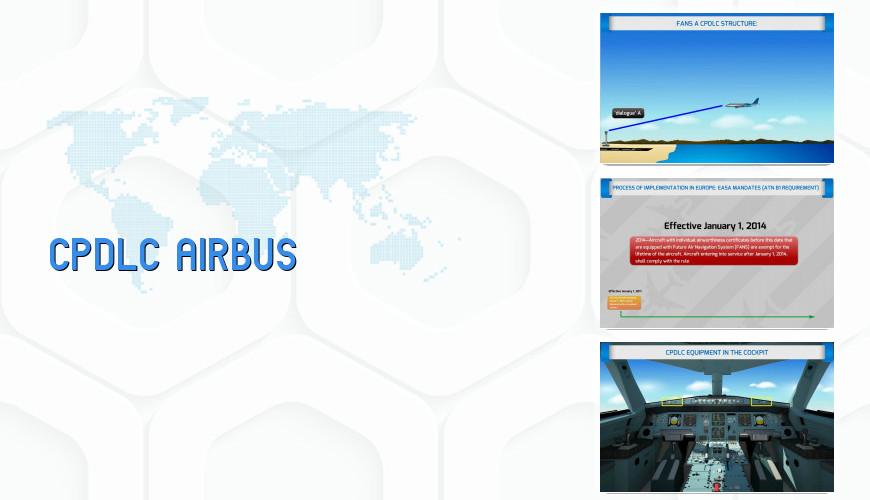
Course Information
This course meets and exceeds the requirements for an initial introduction or a recurrent review of CPDLC/ADS-C knowledge and operational procedures for oceanic flight training. This specific course is designed for Airbus aircraft, and there are other courses for Boeing and corporate aircraft. This course includes the following information: Definitions that are required to be known to operate in a CPDLC/ADS-C environment over the oceans. The functions and benefits of both CPDLC and ADS-C (Data link communication with ATC and route tracking without the use of ground-based radars. A discussion of the different types of messages which can be sent to and from the aircraft. A review of the types of CPDLC equipment used in Airbus aircraft for CPDLC/ADS-C and the implementation schedule for the establishment of these procedures over the North Atlantic and in Europe; and A discussion of Automatic Dependent Surveillance-Contract for better aircraft tracking in remote locations such as the ocean. Another course discusses the use of ADS-B and its implementation within Europe. If you pilot a Boeing or corporate aircraft, there are other courses available specifically designed for your type aircraft, this course covers specific Airbus equipment for CPDLC/ADS-C.
Content of the Course
| Slide | 43 | Duration | 00:24:45 | Exam | No |
|---|
- COURSE START
- INTRODUCTION
- DEFINITIONS
- FUNCTION OF CPDLC
- BENEFITS OF CPDLC
- FANS A CPDLC STRUCTURE
- TYPES OF MESSAGES
- EXAMPLES OF MESSAGES
- IMPLEMENTATION OF CPDLC
- CPDLC EQUIPMENT IN THE COCKPIT
- ADDITIONAL EQUIPMENT
- PROCESS OF IMPLEMENTATION IN THE NORTH ATLANTIC
- PROCESS OF IMPLEMENTATION IN EUROPE: EASA MANDATES (ATN B1 REQUIREMENT)
- THE AUTOMATIC DEPENDENT SURVEILLANCE – CONTRACT (ADS-C)
- HUMAN FACTORS ISSUES WITH CPDLC/ADS-C/B
- COURSE END
